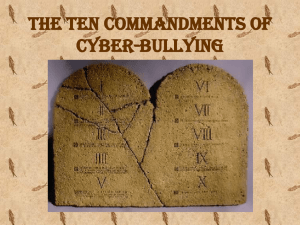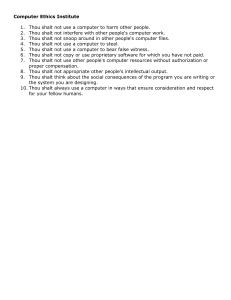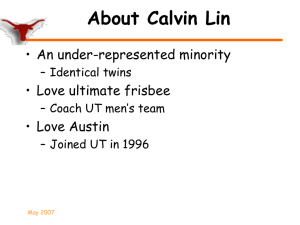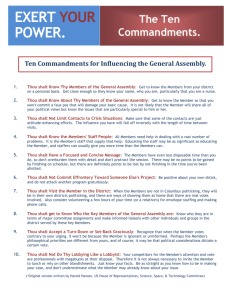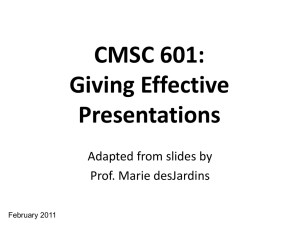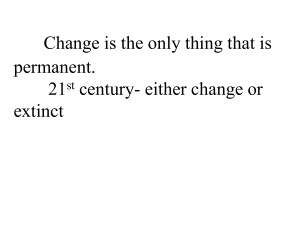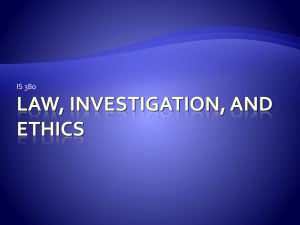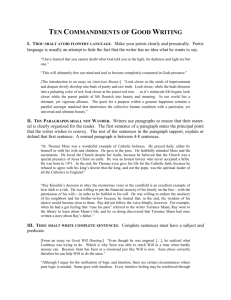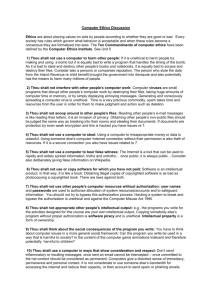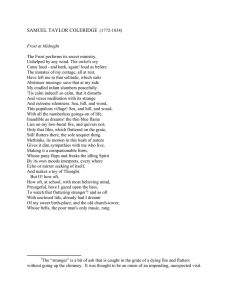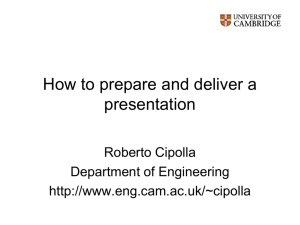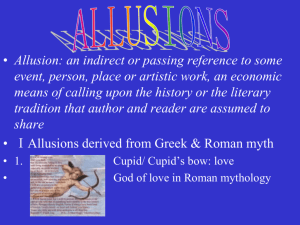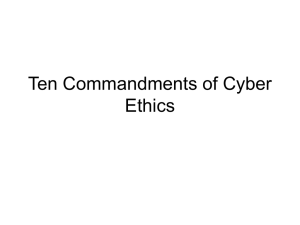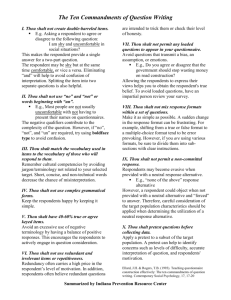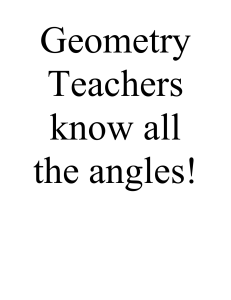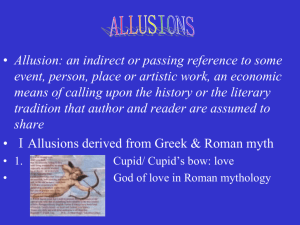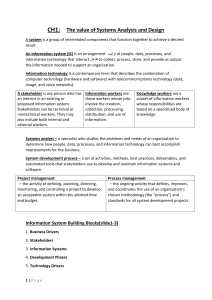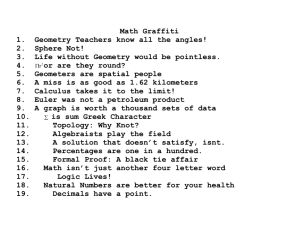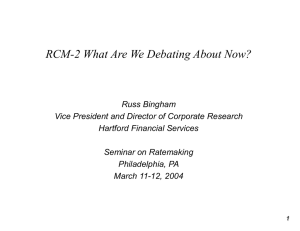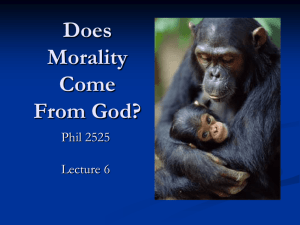Here are the 7 commandments for a formal analysis for Professor
advertisement
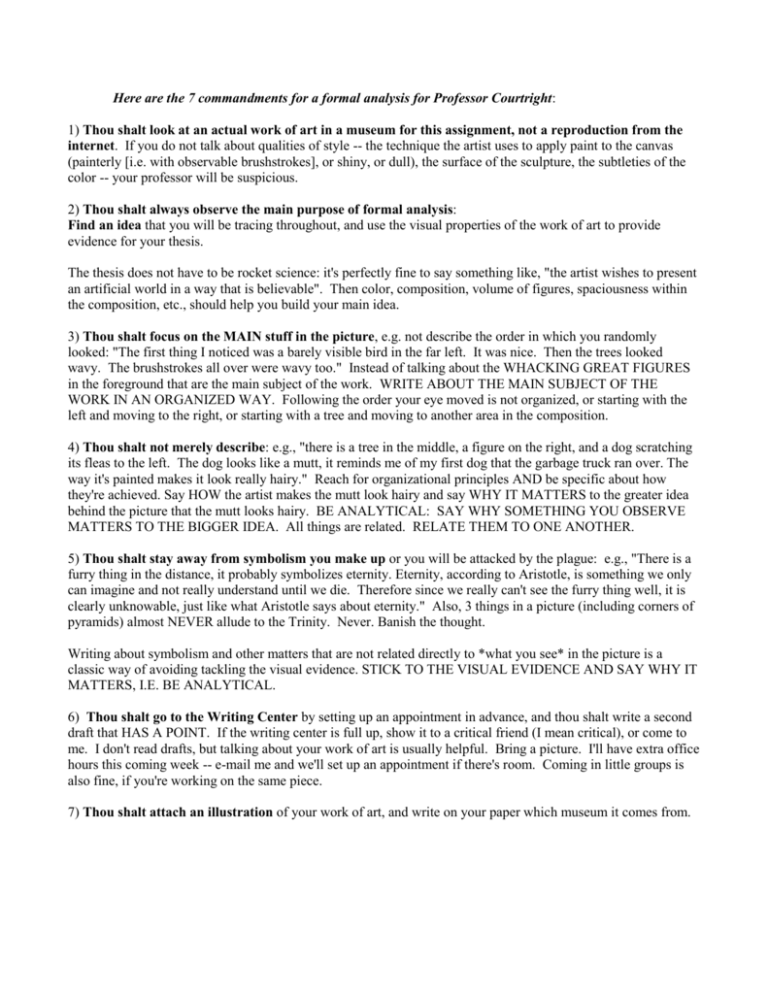
Here are the 7 commandments for a formal analysis for Professor Courtright: 1) Thou shalt look at an actual work of art in a museum for this assignment, not a reproduction from the internet. If you do not talk about qualities of style -- the technique the artist uses to apply paint to the canvas (painterly [i.e. with observable brushstrokes], or shiny, or dull), the surface of the sculpture, the subtleties of the color -- your professor will be suspicious. 2) Thou shalt always observe the main purpose of formal analysis: Find an idea that you will be tracing throughout, and use the visual properties of the work of art to provide evidence for your thesis. The thesis does not have to be rocket science: it's perfectly fine to say something like, "the artist wishes to present an artificial world in a way that is believable". Then color, composition, volume of figures, spaciousness within the composition, etc., should help you build your main idea. 3) Thou shalt focus on the MAIN stuff in the picture, e.g. not describe the order in which you randomly looked: "The first thing I noticed was a barely visible bird in the far left. It was nice. Then the trees looked wavy. The brushstrokes all over were wavy too." Instead of talking about the WHACKING GREAT FIGURES in the foreground that are the main subject of the work. WRITE ABOUT THE MAIN SUBJECT OF THE WORK IN AN ORGANIZED WAY. Following the order your eye moved is not organized, or starting with the left and moving to the right, or starting with a tree and moving to another area in the composition. 4) Thou shalt not merely describe: e.g., "there is a tree in the middle, a figure on the right, and a dog scratching its fleas to the left. The dog looks like a mutt, it reminds me of my first dog that the garbage truck ran over. The way it's painted makes it look really hairy." Reach for organizational principles AND be specific about how they're achieved. Say HOW the artist makes the mutt look hairy and say WHY IT MATTERS to the greater idea behind the picture that the mutt looks hairy. BE ANALYTICAL: SAY WHY SOMETHING YOU OBSERVE MATTERS TO THE BIGGER IDEA. All things are related. RELATE THEM TO ONE ANOTHER. 5) Thou shalt stay away from symbolism you make up or you will be attacked by the plague: e.g., "There is a furry thing in the distance, it probably symbolizes eternity. Eternity, according to Aristotle, is something we only can imagine and not really understand until we die. Therefore since we really can't see the furry thing well, it is clearly unknowable, just like what Aristotle says about eternity." Also, 3 things in a picture (including corners of pyramids) almost NEVER allude to the Trinity. Never. Banish the thought. Writing about symbolism and other matters that are not related directly to *what you see* in the picture is a classic way of avoiding tackling the visual evidence. STICK TO THE VISUAL EVIDENCE AND SAY WHY IT MATTERS, I.E. BE ANALYTICAL. 6) Thou shalt go to the Writing Center by setting up an appointment in advance, and thou shalt write a second draft that HAS A POINT. If the writing center is full up, show it to a critical friend (I mean critical), or come to me. I don't read drafts, but talking about your work of art is usually helpful. Bring a picture. I'll have extra office hours this coming week -- e-mail me and we'll set up an appointment if there's room. Coming in little groups is also fine, if you're working on the same piece. 7) Thou shalt attach an illustration of your work of art, and write on your paper which museum it comes from.
